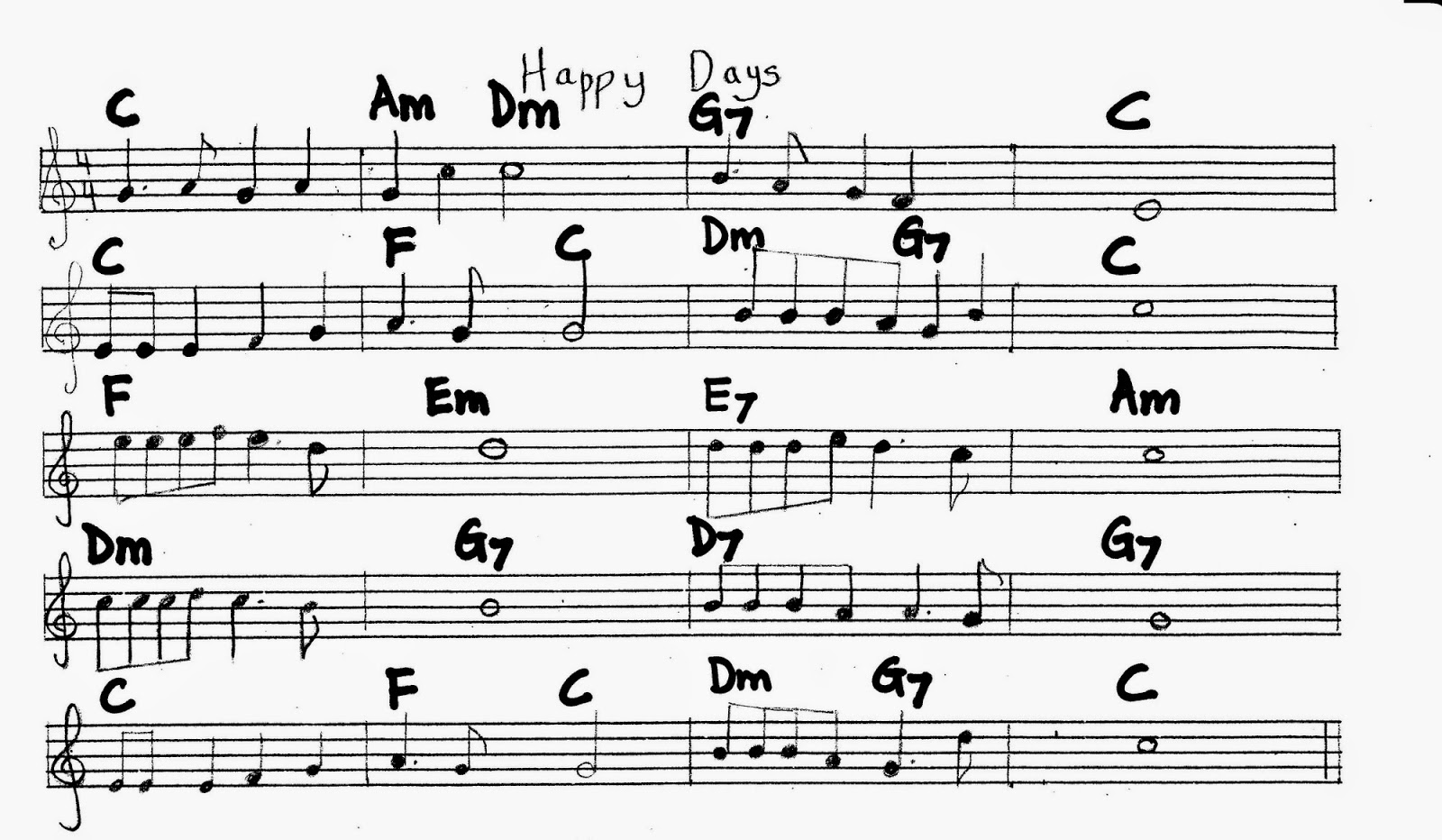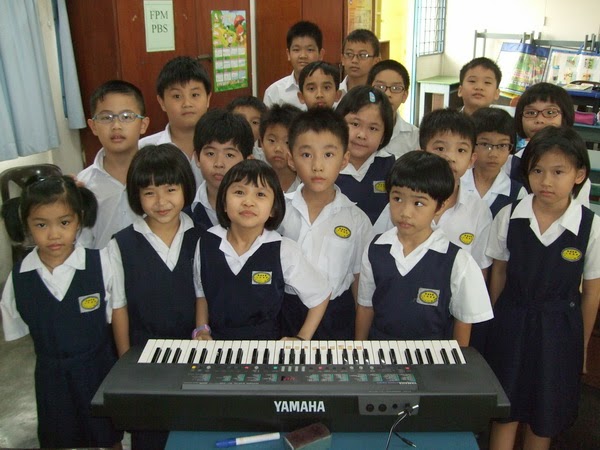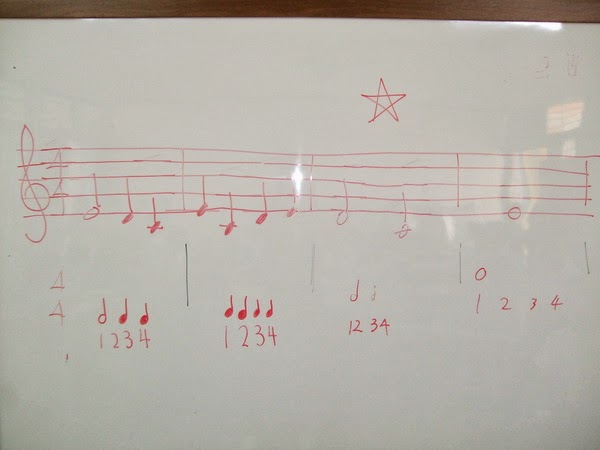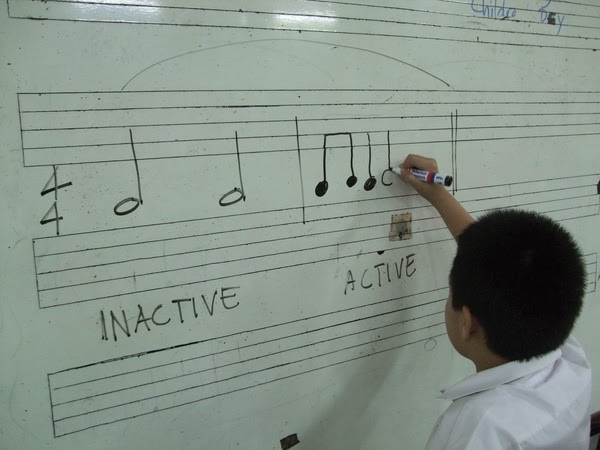During the first day of the Music Jamboree, the theme focused on creative teaching ideas to enhance the student's musical experience during lessons. This was held at J. Y. Klasik, a music centre who graciously provided their facility to host this session.
 On the second day, a special workshop session was held during the first half of the day on music composition. At this session held at the Penang Chinese Girls Primary School, a small group of five students participated in the workshop to complete a composition each. The purpose of this session was to encourage students to use music theory and the instrumental instruction they have received in a creative manner, which is, to compose music.
On the second day, a special workshop session was held during the first half of the day on music composition. At this session held at the Penang Chinese Girls Primary School, a small group of five students participated in the workshop to complete a composition each. The purpose of this session was to encourage students to use music theory and the instrumental instruction they have received in a creative manner, which is, to compose music.Encouraging a music student to compose is a rewarding experience to apply music. The students get to use their creativity to conceptualize their compositions. They were only required to whatever musical knowledge that they have individually acquired up to that point in time. The students were eager and enthusiastic in their attempts and did quite well. One student even added an accompaniment in the form of a piano arrangement to her composition.
Later, during the afternoon session, the teachers received their assignments to prepare for the activities that they will conduct with the many students that they will be meeting during the next two days at the Penang Chinese Girls Primary School.
 The third day of the music jamboree, as has always been, is the students music jamboree where primary school students who registered to participate showed up for their music program that involved musical performance in various formats. For this year, the Year 1 - 5 students were from Penang Chinese Girls Primary School, Convent Light Street and Tar Thong Primary School. This session was only for a period of three hours to prepare students to perform the next day.
The third day of the music jamboree, as has always been, is the students music jamboree where primary school students who registered to participate showed up for their music program that involved musical performance in various formats. For this year, the Year 1 - 5 students were from Penang Chinese Girls Primary School, Convent Light Street and Tar Thong Primary School. This session was only for a period of three hours to prepare students to perform the next day. The students' program was co-planned with Ms. June Loo of the Penang Chinese Girls Primary School. Ms. Loo is the senior music educator of the school and the key person who has been working with us all these years for the students' music jamboree segment. For this year, she participated and led the Year 4 & 5 students in a special performance using the 'angklung' (an ethnic musical instrument made of bamboo).
The students' program was co-planned with Ms. June Loo of the Penang Chinese Girls Primary School. Ms. Loo is the senior music educator of the school and the key person who has been working with us all these years for the students' music jamboree segment. For this year, she participated and led the Year 4 & 5 students in a special performance using the 'angklung' (an ethnic musical instrument made of bamboo). The music jamboree teachers were all assigned to lead their respective group of students to perform during the final day of the music jamboree. The music jamboree serves to bring new experiences to music teachers and one of the activities we indulge in is to have those who teach music on a 'one to one' basis to step out of their comfort zone to do something they have never done before. Or thought they would never do! That, being to instruct a large group of students to perform.
The music jamboree teachers were all assigned to lead their respective group of students to perform during the final day of the music jamboree. The music jamboree serves to bring new experiences to music teachers and one of the activities we indulge in is to have those who teach music on a 'one to one' basis to step out of their comfort zone to do something they have never done before. Or thought they would never do! That, being to instruct a large group of students to perform. It was quite a challenge for some of them but nonetheless, they did well as can be seen from the videos of the students' performances that they led.The links to the videos are below at the end of this report.
It was quite a challenge for some of them but nonetheless, they did well as can be seen from the videos of the students' performances that they led.The links to the videos are below at the end of this report.The entire first half of the day was for the music jamboree teachers to plan their students' performances, to rehearse the students and get them ready to perform on stage at the school hall the following day.
During the second session in the afternoon, the teachers were brought to Evolution Music House, another music centre located at the upmarket Gurney Plaza shopping mall in Penang. There, they met with Ms. Lucy Loo, a composer whose contemporary piano works were published in a series of publications titled "Because Of Love" by Rhythm MP. Those series of books were co-authored together with another composer, Mr. Raymond Tan. Ms. Lucy conducted a hands-on workshop with the teachers and had them perform in an ensemble using the various musical instruments available at the music centre.
The final day on 19th September was the performance day involving the teachers and students under their charge. Here are the videos of the students' performances.
Year 1 & 2 students
Year 3 (Group A)
Year 3 (Group B)
Year 4 & 5 (Group A)
Year 4 & 5 (Group B)
We also featured the top compositions of four students from the Penang Chinese Girls Primary School who participated in a composition project we initiated at the school.It was quite a defining moment for these students to hear their compositions being performed live to an audience of fellow students, teachers and parents. The winning compositions were performed by some members of the Penang Chinese Girls Primary School's recorder ensemble. An added bonus was the recorder ensemble students were so eager that they asked to perform a classical piece titled 'Eine Kliene' by Mozart for the audience.
You can further view all the photos of this year's music jamboree by clicking the link below:
As we look forward to next year's Music Jamboree, we truly appreciate and would like to sincerely thank;
- the music teachers who have participated in this year's program (and hope that you all had an enjoyable time here),
- the Penang Chinese Girls Primary School for hosting the students' part of the music jamboree and for the use of the school's great facilities,
- J. Y. Klasik and Evolution Music House for the use of their premises and facilities,
- Ms. June Loo for your support and advice
















































